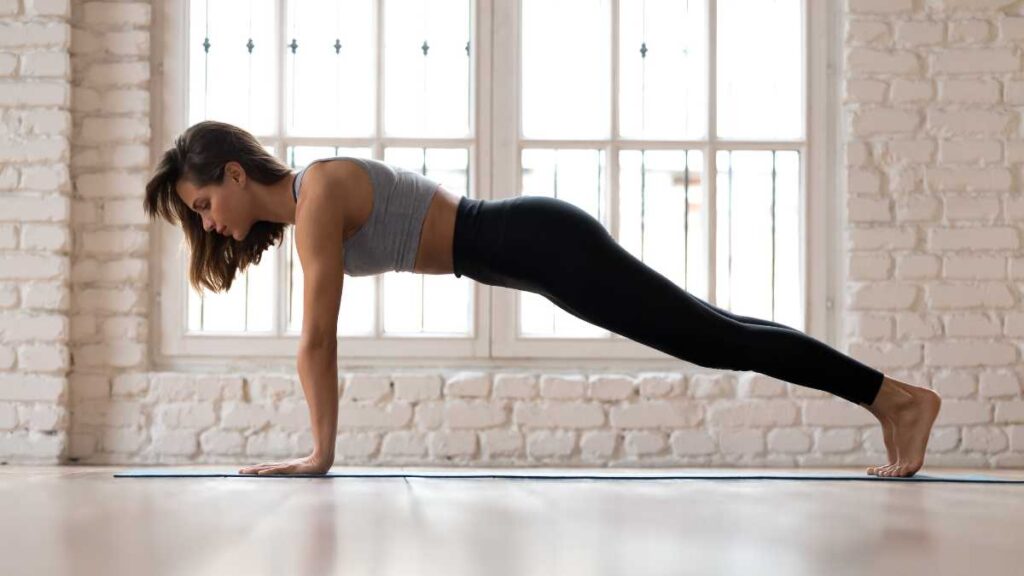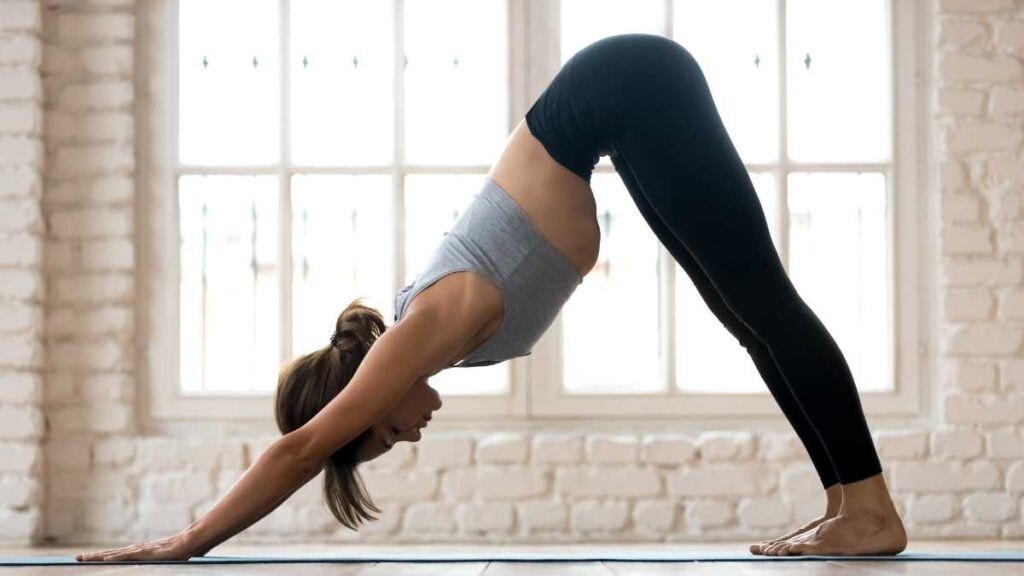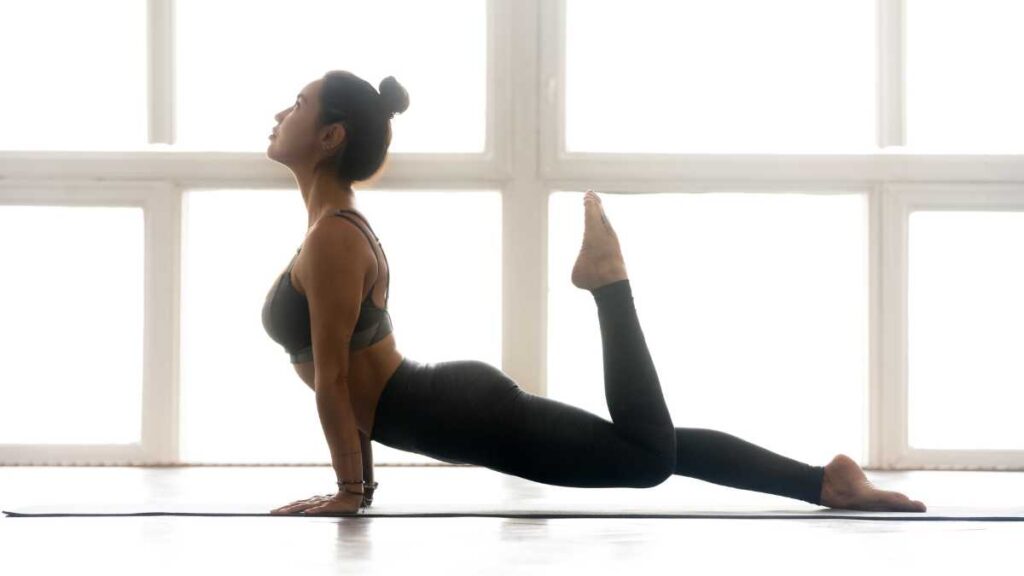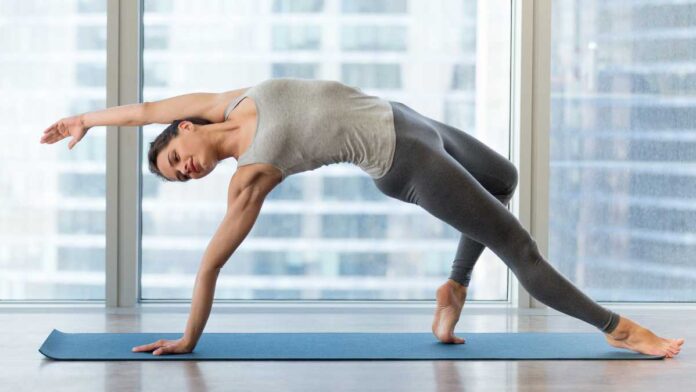You’ve just signed up for your first Pilates class. The instructor talks about core strength, flexibility, and posture. You’re excited but also a little unsure.
Will you really see changes? How soon will they happen? If you’re asking yourself how long to see Pilates results, let me break it down for you.
Here’s the good news: Most people start seeing noticeable Pilates results within 3 to 8 weeks, depending on consistency and intensity.
That’s right—you don’t have to wait months to feel stronger or stand taller. Let’s dive into what “results” mean in Pilates and why science backs these timelines.
What Does ‘Results’ Mean in Pilates?

When we talk about Pilates results, we’re not just talking about toned abs (though those are nice too). Results can include improved core strength, better flexibility, enhanced posture, and increased endurance.
It’s also about the mind-body connection, which helps you move with purpose and precision.
Pilates isn’t just about movement—it’s about transformation. After feedback from my community, I realized people often expect instant results.
But here’s the truth: Progress happens gradually, and that’s okay.
For instance, some might notice their clothes fitting differently after a few weeks, while others feel less stiff when bending over. These small wins are part of the bigger picture.
Pilates is like planting seeds—consistent care leads to growth over time. And remember, everyone’s journey is unique. What works for one person might take slightly longer for another, and that’s perfectly normal.
How Long to See Pilates Results – What Science Says

Let’s get into the nitty-gritty. Studies show that Pilates delivers measurable benefits in as little as a few weeks.
Core Strength And Posture
A study found that participants saw significant improvements in core strength and posture within 6-8 weeks of consistent practice.
This is because Pilates targets deep stabilizing muscles that support your spine, creating a strong foundation for everyday movements.
For example, exercises like the Hundred or Plank engage your transverse abdominis, which acts like a natural corset for your midsection. Over time, this translates to better balance and reduced risk of injury.
Flexibility And Mobility
Another study showed flexibility gains in just 4-6 weeks. Participants reported being able to stretch farther and move more freely.
Flexibility isn’t just about touching your toes—it’s about reducing stiffness and preventing injuries in daily life. Movements like the Roll-Up or Spine Stretch Forward gently lengthen tight muscles, making them more pliable over time.
This newfound mobility can make activities like gardening, playing with kids, or even sitting at a desk more comfortable.
Chronic Pain Reduction
For those dealing with back pain, research highlights reduced discomfort and improved muscle endurance after 8-12 weeks. Pilates strengthens the muscles around your spine, alleviating pressure and promoting healing.
In fact, many physical therapists recommend Pilates as part of rehabilitation programs for conditions like herniated discs or sciatica.
By focusing on controlled, low-impact movements, Pilates helps rebuild strength without aggravating existing issues.
Your body adapts faster than you think. These timelines might vary based on your starting point, but one thing is clear: Regular practice leads to progress.
Even if you’re new to exercise, Pilates meets you where you are and builds from there. Plus, the controlled, low-impact nature of Pilates makes it accessible for all fitness levels.
Whether you’re recovering from an injury or training for a marathon, Pilates complements any lifestyle.
Key Factors That Influence Your Pilates Progress
Not everyone sees results at the same pace, and that’s normal. Several factors play a role:
Consistency And Frequency
Practicing Pilates 2-3 times per week yields steady progress, while 4+ sessions can speed things up. Think of it like watering a plant—the more attention you give it, the quicker it blooms.
Skipping sessions or doing them sporadically can delay results, so try to stick to a schedule.
Consistency doesn’t mean perfection; even short workouts count toward your goals. For example, a 15-minute mat session during a busy day still contributes to your overall progress.
Type of Pilates
Mat Pilates builds foundational strength, but reformer Pilates adds resistance, which can accelerate muscle toning. Reformer classes often incorporate springs and straps, challenging your muscles in unique ways.
If you’re serious about seeing faster results, consider mixing both mat and reformer workouts. Each type offers different benefits, keeping your routine fresh and effective.
For beginners, mat Pilates is a great starting point, while reformer classes provide variety and added challenge as you advance.
Lifestyle Factors
Diet, sleep, and stress management impact recovery and overall progress. For example, getting enough protein supports muscle repair, while quality sleep boosts energy levels for workouts.
Stress can also hinder progress by increasing cortisol levels, which may lead to fatigue or weight gain. Incorporating mindfulness practices like meditation or journaling alongside Pilates can amplify your results.
A balanced diet rich in fruits, vegetables, lean proteins, and healthy fats fuels your body for optimal performance.
Instructor Guidance
Proper form and technique prevent plateaus and injuries. A skilled instructor ensures you’re engaging the right muscles and avoiding habits that could slow your progress.
Don’t hesitate to ask questions during class or seek private lessons if you’re struggling with specific moves.
Investing in guidance early on pays off in the long run. An experienced teacher can tailor exercises to your needs, ensuring you get the most out of every session.
Consistency beats perfection every time. Even small efforts add up over weeks and months. Remember, it’s not about doing everything perfectly; it’s about showing up regularly.
Physical vs. Mental Results – What Changes First?
One fascinating aspect of Pilates is how it impacts both the mind and body—but not always at the same pace.
Mental Clarity And Stress Relief
Many notice improved focus and reduced stress within the first few weeks. The controlled breathing techniques used in Pilates activate the parasympathetic nervous system, helping calm your mind.
Over time, this translates to better decision-making and emotional resilience outside the studio. For example, someone juggling work deadlines might find themselves handling stress more effectively thanks to their Pilates practice.
Posture And Flexibility
By week 4-6, you’ll likely see better alignment and greater range of motion. Simple tasks like reaching for something on a high shelf become easier.
Improved posture also reduces strain on your neck and shoulders, which can alleviate tension headaches. Imagine walking taller and feeling more confident in your own skin—it’s a game-changer.
Muscle Toning And Endurance
These physical changes take a bit longer, usually appearing by week 6-8 with regular practice. As your muscles adapt to the exercises, you’ll notice increased definition and stamina.
Exercises like Leg Circles or Side-Lying Leg Lifts target hard-to-reach areas, sculpting your body in subtle yet impactful ways. Over time, these changes not only enhance your appearance but also improve functional strength for daily activities.
The mind strengthens before the body does. This dual benefit is what makes Pilates so powerful—it’s not just exercise; it’s self-care.
In fact, many practitioners say the mental clarity they gain keeps them coming back, even more than the physical perks.
Tips to Speed Up Your Pilates Results

Want to see results even faster? Here are some tips:
- Increase Frequency: Aim for 4+ sessions per week if your schedule allows. More frequent practice means your muscles adapt quickly. However, listen to your body—if you feel fatigued, take a rest day. Rest is just as important as effort.
- Combine with Other Workouts: Pair Pilates with cardio or resistance training for enhanced fat loss and muscle definition. For example, adding a brisk walk or light weights complements Pilates beautifully. Cross-training prevents boredom and challenges your body in new ways.
- Focus on Mind-Muscle Connection: Engage your muscles fully during each movement. Visualize your core tightening or your legs lengthening as you perform an exercise. This mindful approach maximizes the effectiveness of every rep.
- Track Progress: Take photos or keep a journal to notice small improvements. Sometimes progress feels slow, but looking back at where you started can be incredibly motivating. Celebrate milestones, whether it’s holding a Plank for 30 seconds longer or mastering a challenging move.
Small steps lead to big wins. Trust me—I’ve seen it happen time and again. One client told me she didn’t realize how much her posture had improved until she compared old photos to recent ones.
Another shared how Pilates helped her prepare for a marathon by improving her running form and reducing knee pain.
Common Mistakes That Slow Down Progress
Avoid these pitfalls to stay on track:
- Skipping Workouts: Missing sessions delay results. Stick to a routine, even if it’s short. Life gets busy, but even 10 minutes of Pilates is better than nothing. Use online videos or apps if you can’t make it to class.
- Improper Core Engagement: Technique matters more than reps. Focus on activating your core instead of rushing through movements. Poor form can lead to injuries or diminish the effectiveness of the workout.
- Ignoring Breathwork: Breathing enhances muscle activation and endurance. Don’t overlook it. Try inhaling deeply through your nose and exhaling fully through your mouth during each rep. Coordinated breathing ensures oxygen reaches your muscles, improving performance.
- Sticking to Mat Pilates Only: Adding resistance through reformer Pilates or props speeds up strength gains. Variety keeps your muscles challenged and prevents boredom. Experiment with tools like resistance bands, Pilates rings, or weighted balls to spice up your routine.
Real-Life Stories – Pilates Success in Weeks
Let me share a quick story. One member of my community started Pilates to ease lower back pain.
Within 4 weeks, she noticed her posture improving. By week 8, her pain was almost gone, and she felt stronger than ever.
Feedback from other practitioners echoes similar themes: better posture, increased flexibility, and a stronger core. Small, consistent efforts truly lead to big transformations.
Another woman shared how Pilates helped her prepare for a marathon by improving her running form and reducing knee pain.
These stories remind us that Pilates isn’t just about aesthetics—it’s about feeling good in your own skin. Whether you’re aiming to tone up, recover from an injury, or simply age gracefully, Pilates has something to offer everyone.
Conclusion – How Long to See Pilates Results
So, how long to see Pilates results? Most people see changes within 3 to 8 weeks, but long-term benefits require consistency.
Whether you’re looking to improve your posture, build core strength, or simply feel better in your body, Pilates can deliver.
Remember, Pilates is a journey, not a destination. It’s about building a stronger, more balanced body and mind over time. Be patient, stay consistent, and trust the process.
Start today. Your stronger, more flexible self is just a few sessions away.












